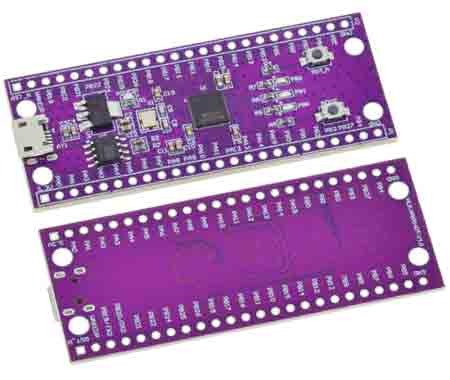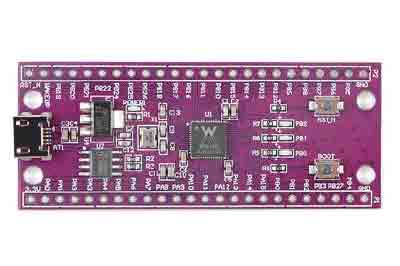The WinnerMicro W806 is a new development board from the manufacturer Shenzhen Hilink Electronics designed for low power consumption and low cost.
The HLK-W806 is powered by a WinnerMicro W806, a 32-bit, 240 Mhz MCU XT804. The set incorporates 1MB of Flash memory and 288 Kb of RAM.
The features of this board are quite impressive, and include up to 44 GPIO, 4-channel, 16-bit ADC, and 5-channel PWM with frequencies from 3Hz to 160 kHz, and up to 15 touch sensors.
As for interface and communication, it has 6 UART, SPI, I2C from 100 kHz to 400 kHz, I2S, and a controller for a 4x32 LCD interface.
Unfortunately, it does not have any type of wireless communication. Interestingly, it is promoted by the manufacturer as an “IoT board.”
- WinnerMicro W806 32-bit XT804 processor at 240 MHz
- 1MB Flash and 288KB RAM
- Up to 44 GPIO
- 4-channel, 16-bit ADC
- 5-channel PWM, from 3Hz to 160kHz
- 6 UART, SPI, I2C (100kHz - 400 kHz), I2S
- 4×32 LCD Interface
- 15 touch sensors
- Reset, Wakeup, 3.3V, and GND signals
- Powered by 5V via micro USB
- Debugging via micro USB
- Reset and boot button
- Dimensions: 65 mm x 26 mm
This board can be purchased for around 2€ from sellers such as AliExpress or Ebay. This places it at a very interesting point in terms of features/price.

Obviously, the absence of WiFi or Bluetooth penalizes it in comparison to our beloved ESP32, the undisputed king in IoT applications at the moment. However, it is also worth noting that the price of the W806 is half that of an ESP32.
However, due to its features, dimensions, and price, we feel that we are facing the natural successor to the STM32 Bluepill. The W806 easily surpasses the Bluepill in features, while also having a lower price.
Of course, when compared to the reference point of the Arduino Nano, this new board far surpasses it in terms of features and price.
Unfortunately, as is often the case in the beginning, documentation on this board is still scarce. Most of it is only available in Chinese, as well as the IDE.
It remains to be seen how the community will receive the W806. Personally, I believe we would be making a mistake if we were to ignore this board (similar to what happened for a long time with the STM32).
In any case, it is certainly a very interesting development board due to its features and price, and we hope it becomes a new alternative in the microprocessor landscape.
